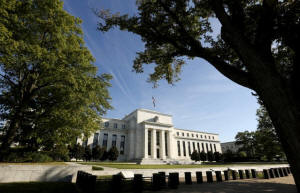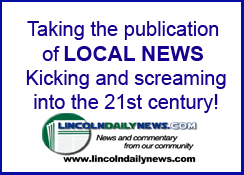Fed, ECB to tighten policy in tandem
 Send a link to a friend
Send a link to a friend
 [June 09, 2018]
By Balazs Koranyi [June 09, 2018]
By Balazs Koranyi
FRANKFURT (Reuters) - Tightening policy by
a notch just one day apart, the world's top two central banks will hope
to signal confidence in global economic growth, despite risks of a trade
war, currency swings and political turbulence.
The U.S. Federal Reserve is almost certain to raise rates again on
Wednesday, inching closer to a neutral policy stance, while the European
Central Bank is likely to signal on Thursday that its 2.55 trillion euro
bond purchase scheme will end this year, a key move in dismantling
crisis-era stimulus.
Though largely a coincidence, their twin steps suggest the era of cheap
central bank cash will soon be over. That indicates major economies are
strong enough to stand on their own but also that central banks are keen
to replenish their policy firepower before the next downturn.
For the ECB, the next step is likely to be another in a series of
incremental moves, as policymakers seek to avoid any potential
backtracking, mindful of their two disastrous rate hikes in 2011, which
exacerbated the euro zone's debt crisis.

The euro zone economy has been growing for over five years, employment
is at a record high, wage inflation is increasingly clear and bond
purchases have done all they could to cut borrowing costs, making ending
the scheme the logical next step.
The ECB has already said the 2.55 trillion euro ($2.99 trillion) asset
purchase program's fate will be on the agenda on Thursday but ECB
President Mario Draghi must decide whether to declare the end or wait
until policymakers next meet in July.
The end of quantitative easing raises a tricky issue for the ECB:
interest rate hikes are tied to the end of the purchases, with the
bank's guidance stipulating that rates will stay unchanged 'well past'
the program's conclusion.
With no purchases into 2019, more specific guidance will be needed to
keep rate hike expectations anchored and to give the bank flexibility to
delay if needed.
It is expected to opt for a formula that specifies steady rates for
several quarters and for as long rates are consistent with its near 2
percent inflation target.
But with growth slowing and yields on the periphery rising due to fears
of political instability in Italy, downside risks appear to be
increasing, suggesting to some that the ECB may try to get out early to
avoid being dragged into politics.
"For what it's worth, the ECB has recently decided to look through
political events," UBS said in a note to clients. "Moreover, some
countries may have an interest in reducing the support to a populist
government. After all, the QE program also entails buying Italian
government bonds."
[to top of second column] |

The Federal Reserve headquarters in Washington, U.S., September 16,
2015. REUTERS/Kevin Lamarque/File Photo

Some even argued that the ECB may opt for a June decision because it fears bond
market turbulence later that would make a July move more difficult.
"Accelerating the end-date announcement due to fears of an even more clouded
economic outlook later on, fueled by policy uncertainty, would do little to
enhance the ECB's credibility" Societe Generale economist Anatoli Annenkov said.
"The ECB would again risk committing to action too far in advance and reacting
excessively to oil price movements," he added, referring to the 15 percent rise
in Brent crude prices this year, which has pushed headline inflation higher.
FED
For the Fed, raising rates by 25 basis points to a range of 1.75 percent to 2
percent appears an easy call.
The U.S. central bank is meeting both of its objectives -- its preferred
inflation rate is at 2 percent and the economy is at full employment.
The question is whether its rate hike projections -- three moves both this year
and next -- move up and whether it expects to hit the so-called neutral interest
rate quicker than earlier thought.
"The domestic risks facing the US economy are arguably tilted to the upside,"
ABN Amro economist Bill Diviney said.
"A significant amount of fiscal stimulus is coming on stream when the economy is
by many measures close to full capacity, and growing at an above-potential
pace."

An overheating labor market would argue for quicker tightening but inflation is
expected to stabilize around target and the Fed is likely to be careful in any
move above the neutral rate, which neither stimulates not cools the economy.
Another issue to watch will be the Fed's assessment of the growing external risk
from an increasingly long list of sources, like a global trade war, or sovereign
risk in places like Italy, Turkey or Argentina.
(Reporting by Balazs Koranyi; Editing by Catherine Evans)
[© 2018 Thomson Reuters. All rights
reserved.] Copyright 2018 Reuters. All rights reserved. This material may not be published,
broadcast, rewritten or redistributed.
Thompson Reuters is solely responsible for this content. |